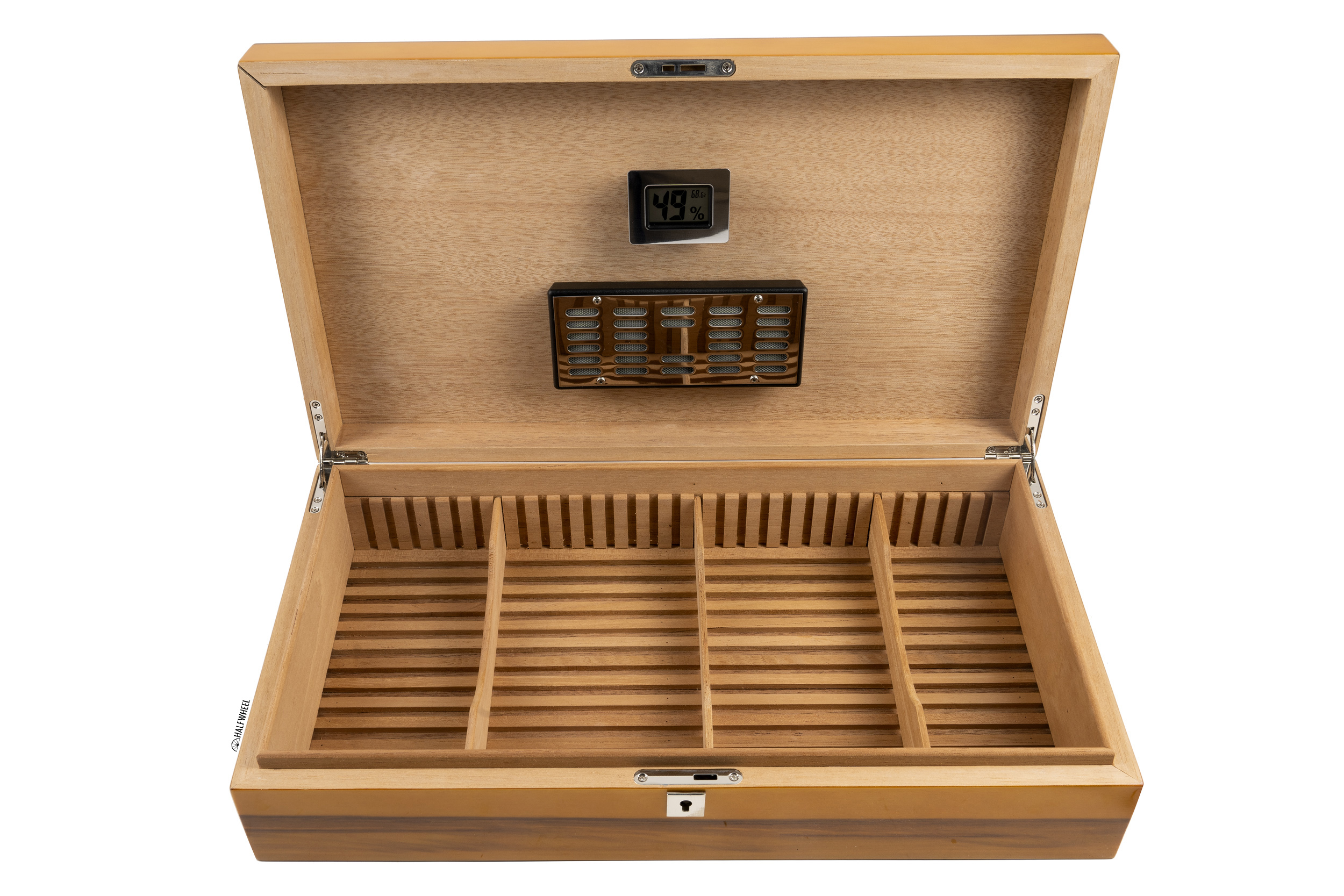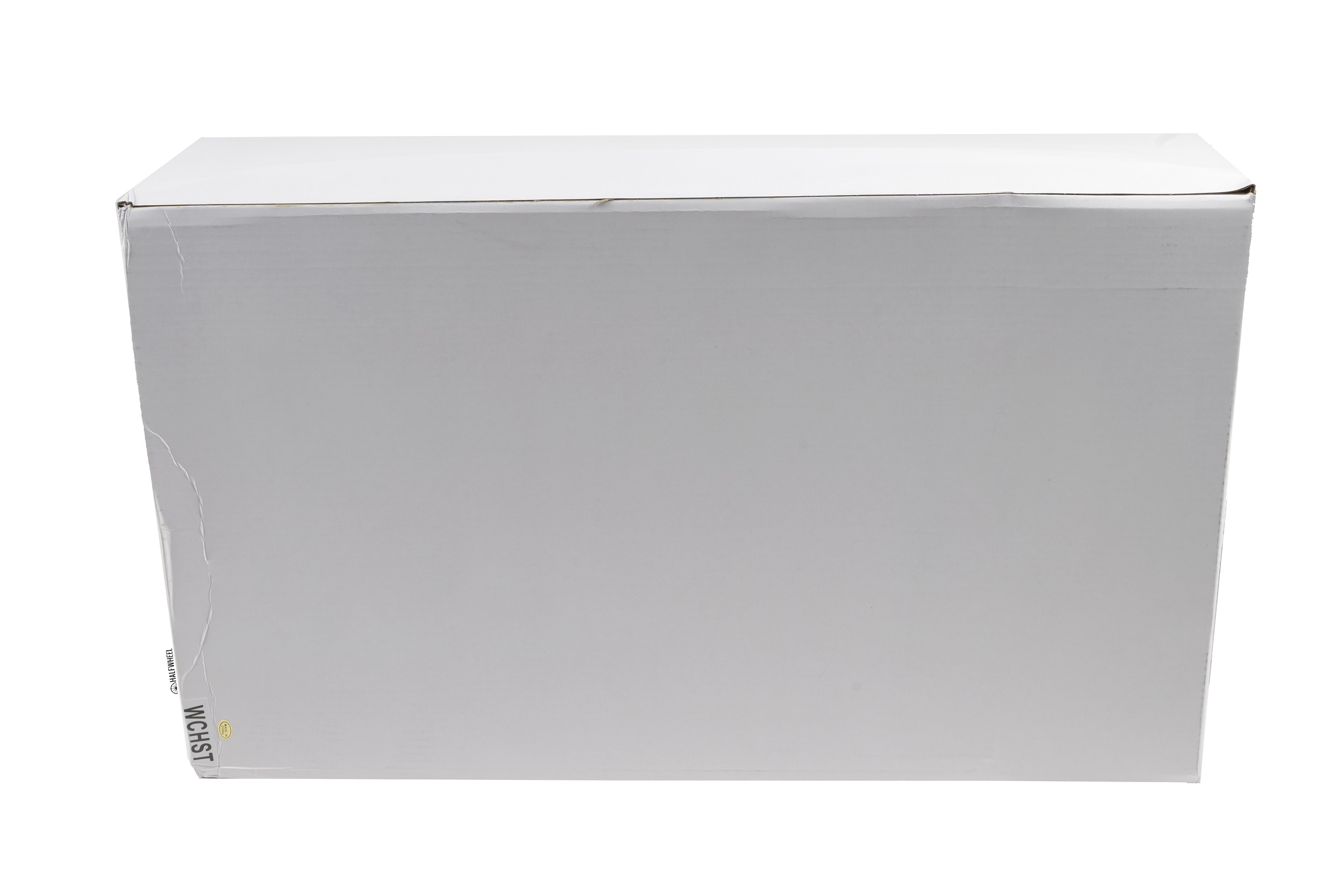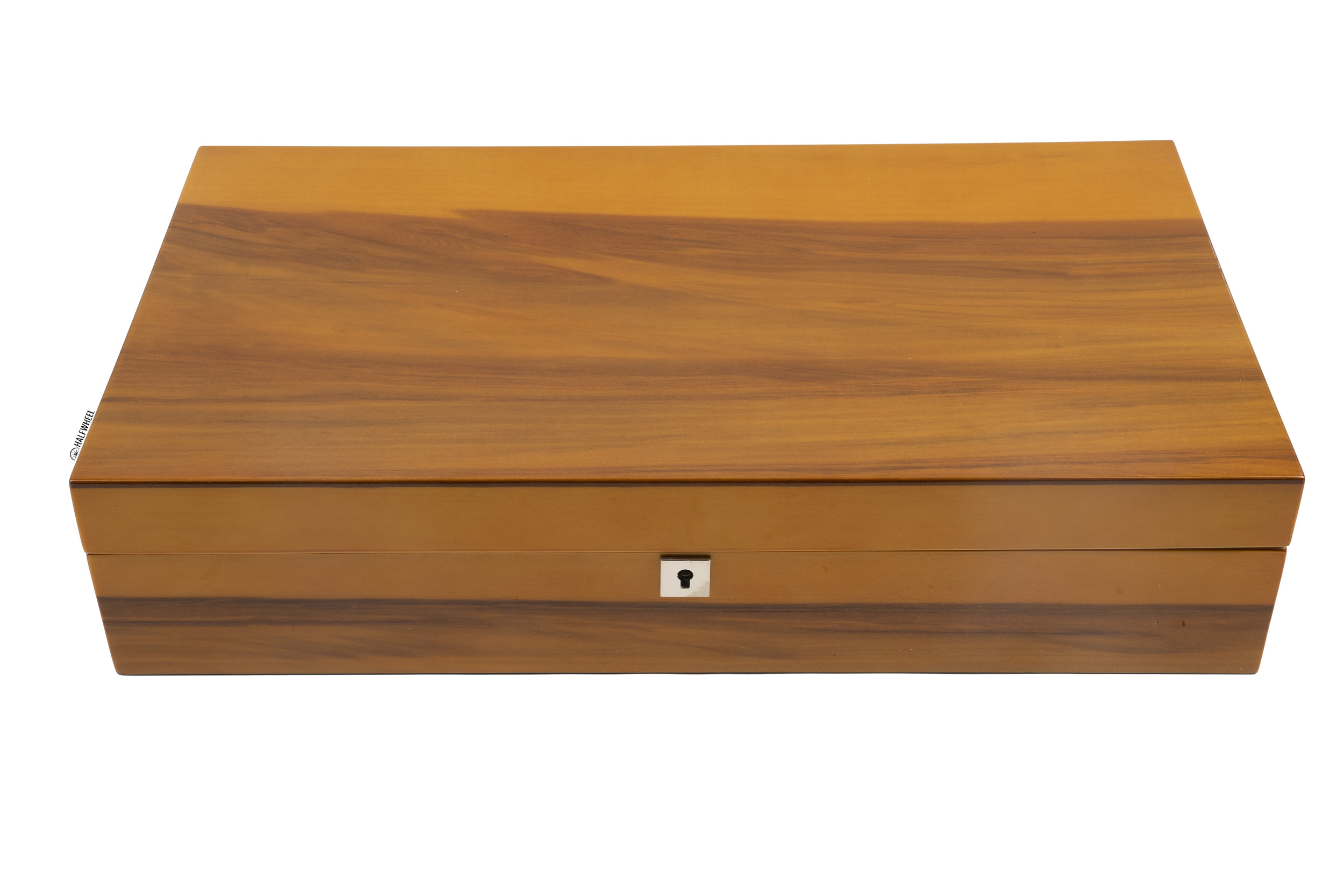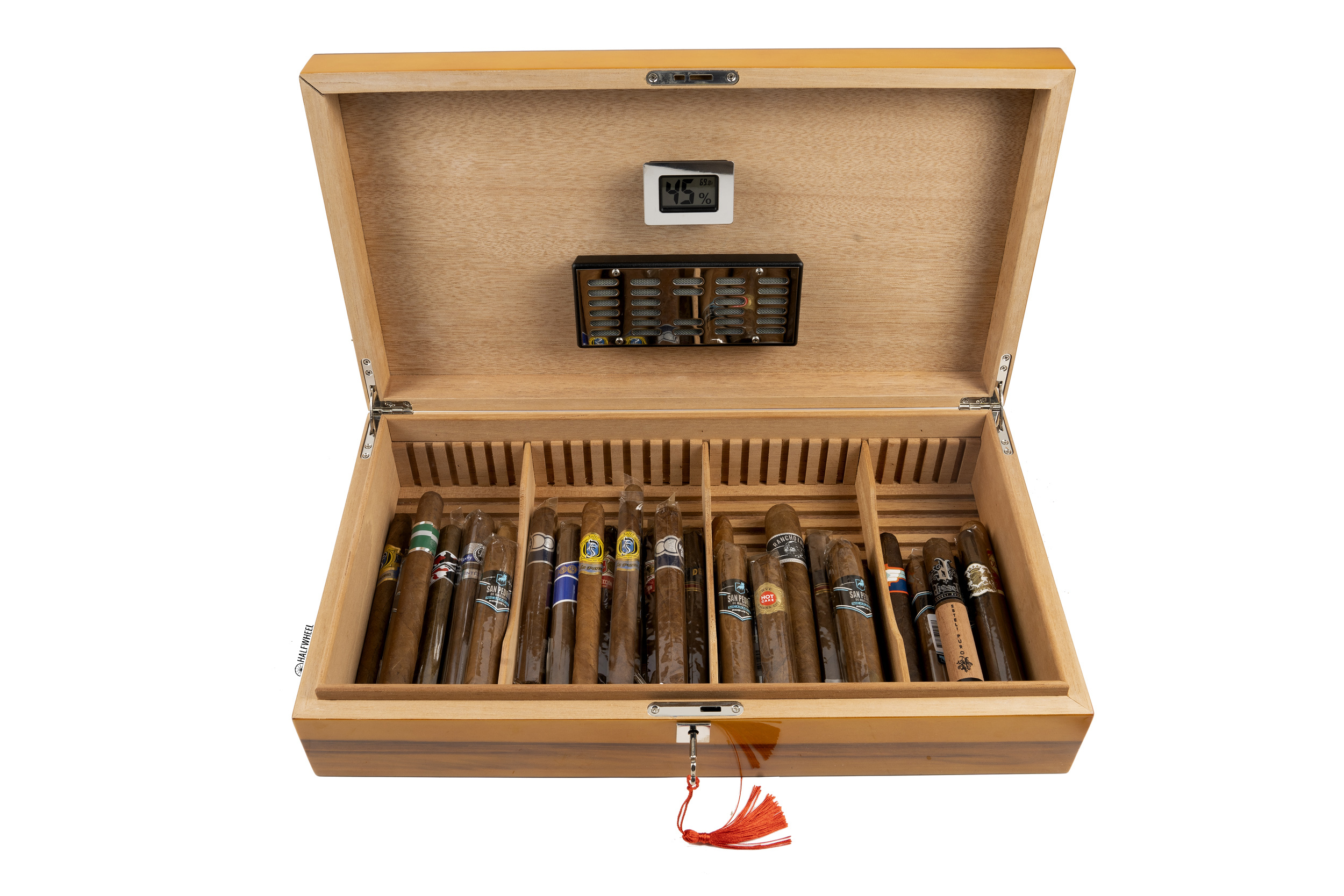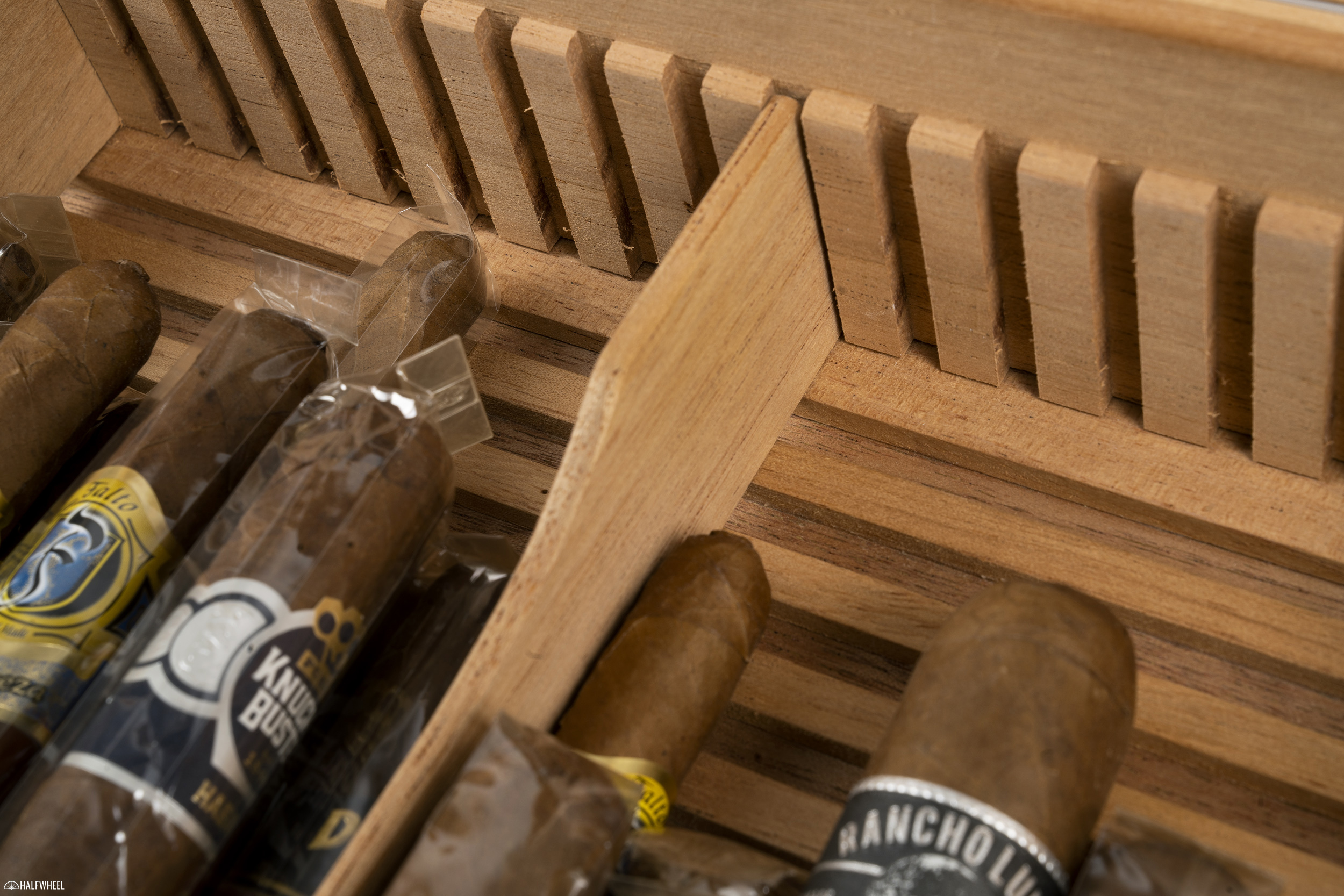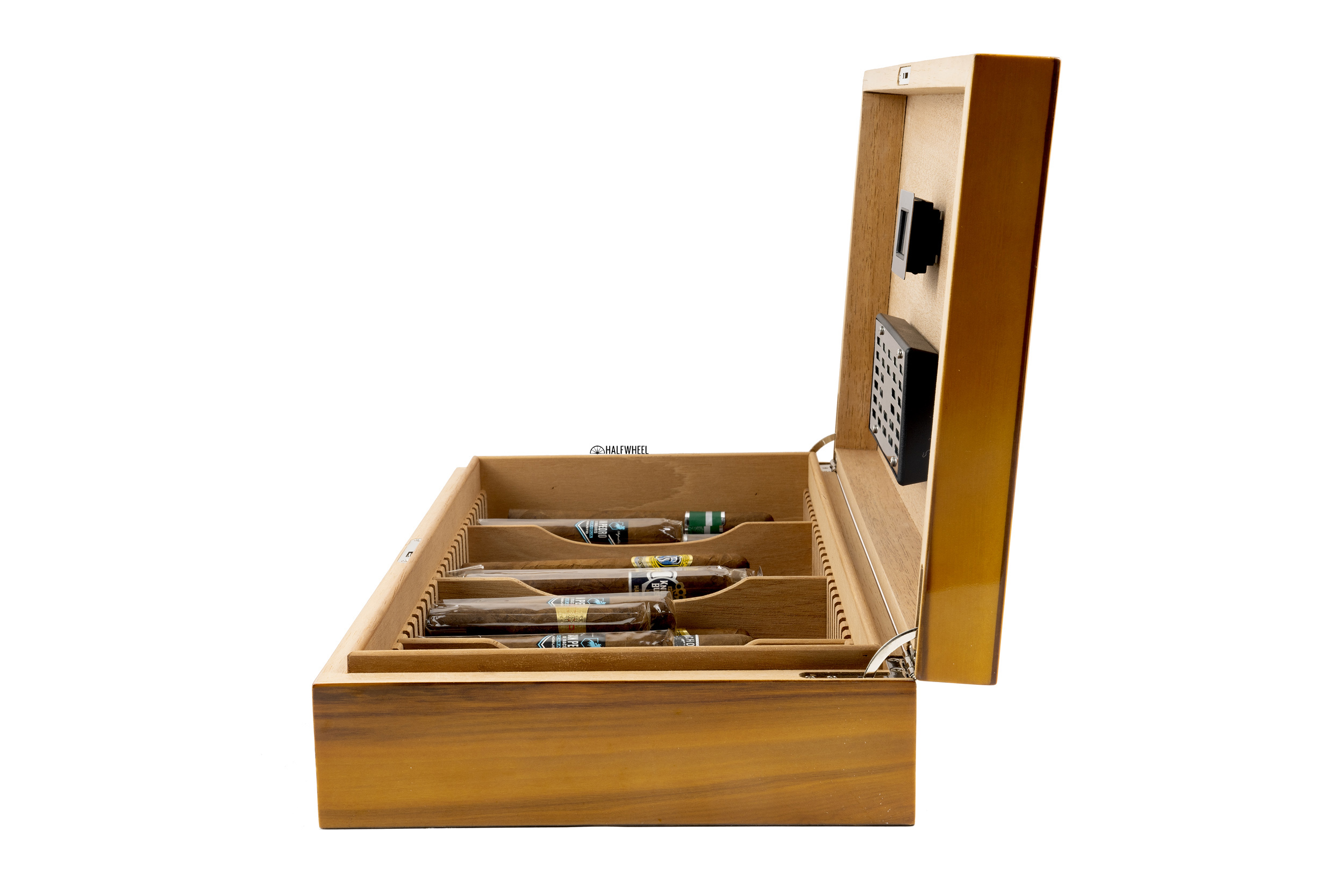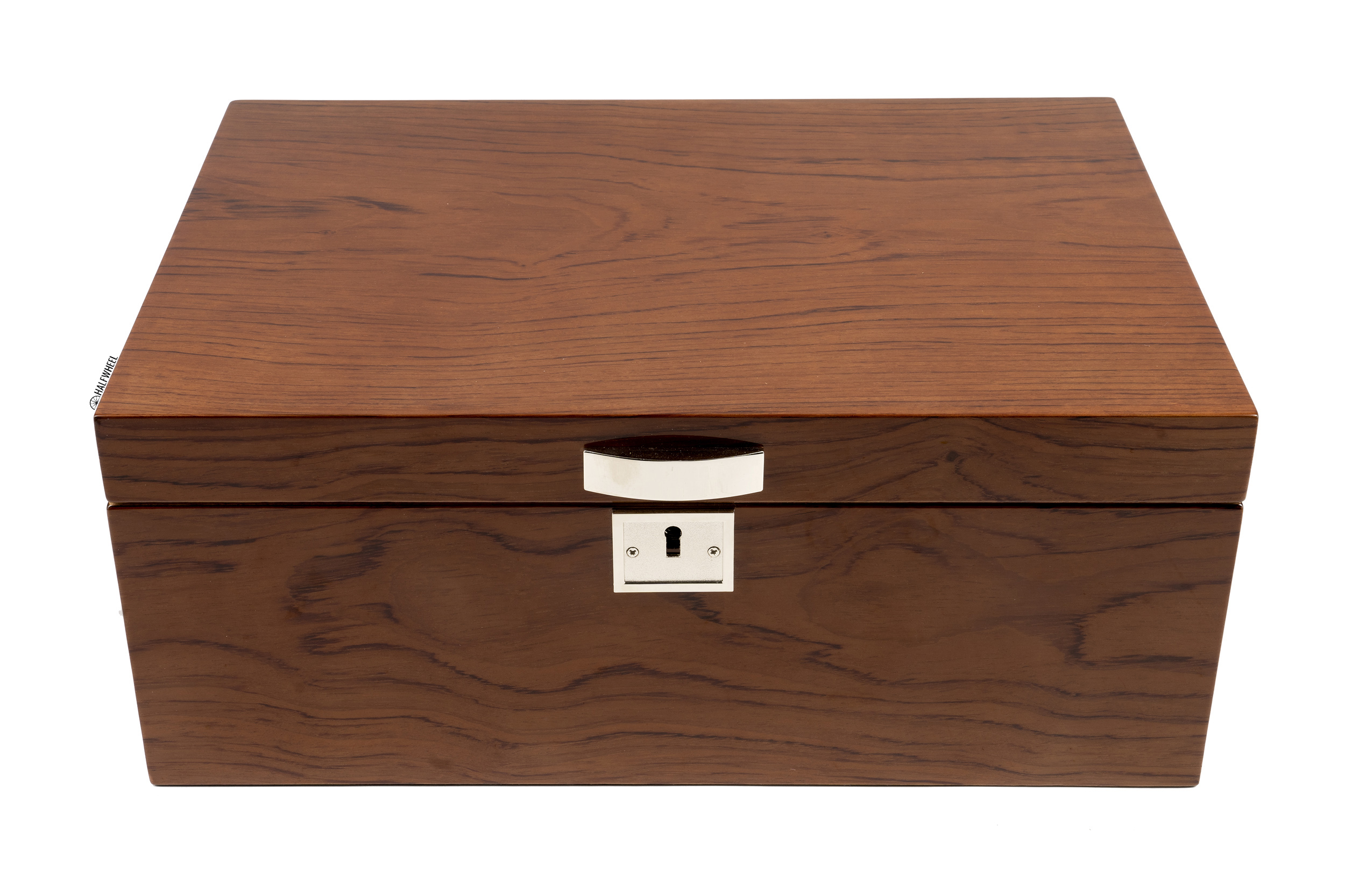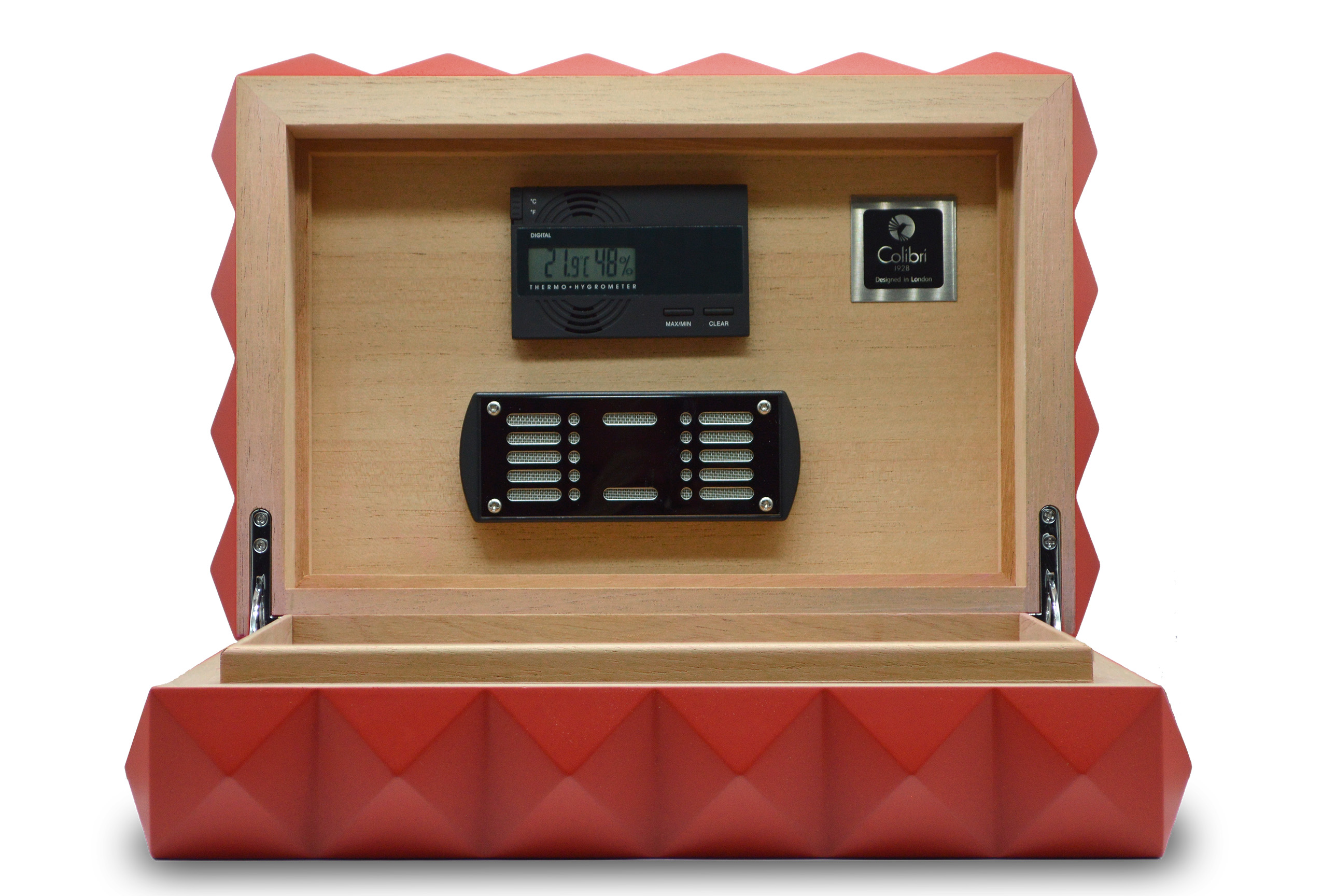The Prestige Winchester is the third humidor reviewed as part of a seven-part series that is attempting to find the best traditional humidor under $175.
More specifically, it’s about reviewing humidors that meet three basic qualifications:
- One that looks like a traditional wooden humidor, i.e. no plastic bins or acrylic humidors.
- One that is large enough to hold around 75 robustos, i.e. no travel humidors.
- Priced at no more than $175 before tax and shipping.
This is also the second humidor from Prestige Imports Group, one of two companies that is responsible for many of the humidors on sale at cigar shops, catalog retailers and even places like Amazon. Prestige—along with Quality Importers Trading Co.—offers everything from travel humidors to large cabinet humidors at prices that are sometimes difficult to believe.
I mentioned during my review of the other Prestige humidor in this series—the Prestige Princeton—I opted to select two humidors from Prestige: one that was a safe choice and one that was a bit more ambitious. This humidor is the latter choice.
WHAT IS IT?
It’s a very wide humidor that is a much different shape than the rest of the humidors in this series, and quite frankly, unlike most humidors sold today. The outside measures 18.5 inches x 10.3125 x 4. It’s rectangular and shows a high gloss wood pattern with the only exterior disruption being a square keyhole in the middle of its front-facing side.
Prestige says it uses an “authentic apple wood lacquer” finish and, comically, says this unit can store 180 cigars.
The inside of the humidor is where things get really interesting. The Winchester comes with three removable dividers, though unlike most humidor dividers, these are slotted dividers. Most humidor dividers have foam pieces on both ends and just squish into place. These have no foam and instead, the humidor features 29 slots on front and back parts of the interior that allow users to adjust the spacing inside. That feature, combined with the slotted floor design make for one of the more interesting-looking interiors you’ll see on any humidor.
For those wondering, the slots between the dividers are .3125 inches apart.
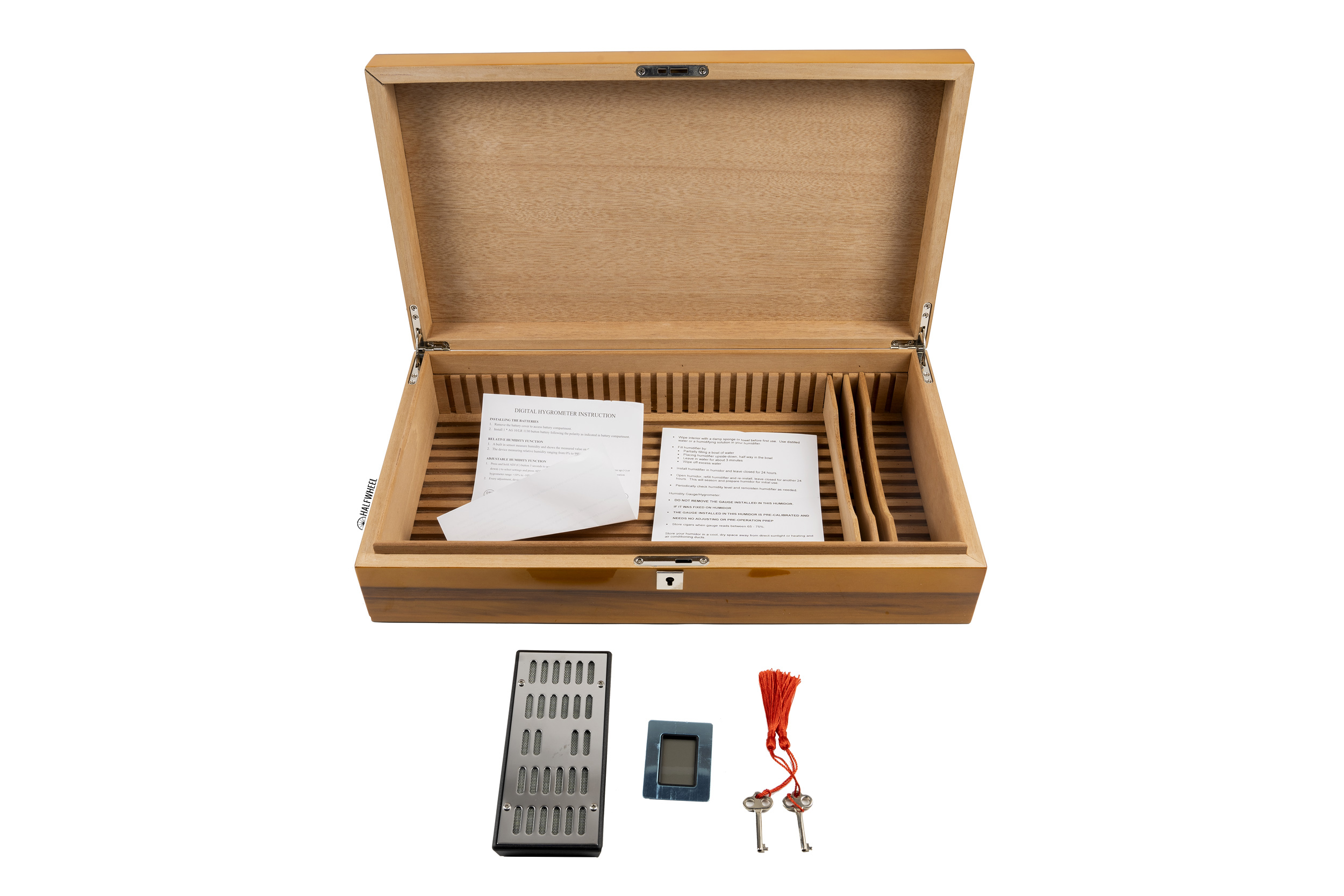
WHAT’S INCLUDED?
- The humidor
- Two keys
- A florists’ foam humidifier with magnetic back
- A digital hygrometer with a magnetic back
- Three dividers
As for the florists’ foam humidifier, here are some thoughts:
Florists’ foam is the traditional humidification method, it’s a green-colored foam that can also be used to keep plants hydrated, hence the name. Humidor manufacturers will place them inside of plastic or metal containers and then recommend you use some sort of combination of distilled water and propylene glycol. The use of propylene glycol—usually recommended in a 50/50 mixture with distilled water—is that it can help to reduce mold and, in theory, absorb excess humidity, specifically excess humidity over 70 percent relative humidity.
Over the years, I haven’t found this to be particularly effective and there seems to be some evidence that more propylene glycol is needed to maintain 70 percent relative humidity at 70 degrees Fahrenheit. For this testing, I used the regularly recommended 50/50 method.
HOW LARGE IS IT INSIDE?
The unique dividers make the interior dimensions a bit more challenging to determine. I think it’s best to look at this humidor as 17 inches x 8.5 x 2.75 on the inside, which works out to 397.375 cubic inches. That being said, the top inch of the bottom shelf doesn’t have the slotted design, and as such, you can get a bit more space—.25 inches—without the slots. I suspect the more accurate volume is actually 401.625 cubic inches.
Humidor Discount’s humidor calculator says this should be able to hold 66 robustos if the space is maximized.
HOW MUCH DOES IT COST?
We paid $149.95 before tax and shipping.
THE TESTING PROCESS
Given that I have seven humidors to compare against one another, I decided to come up with a testing process for all of them. I wanted to test the humidors both as they are sold and also with some of the variables removed so I could test the quality of the boxes themselves.
All humidors had a brand new and freshly calibrated SensorPush device inside for all parts of the test. The SensorPush is a digital device that measures both the temperature and relative humidity, and then sends that data to a smartphone app where it is stored on a minute-by-minute basis. (The SensorPush is not included in any of these humidors.)
The testing process is as follows:
- Seasoning — Two weeks of seasoning with a new sponge soaked in distilled water placed on a plate inside the humidor. The sponge was re-soaked after the first seven days and then removed once the two-week period was complete. Seasoning a humidor is a process to add moisture to the wood. If you don’t do this process, you run the risk that the wood will be dry and will suck the moisture from both the humidifier and the cigar. This can lead to months of frustration, and worse, dried-out cigars.
- Included Humidifier — Four weeks of using the humidor with the included humidifier with no cigars and without opening the lid. This is intended to test the humidor as the manufacturer sends it. Once this was done, I removed the included humidifier and moved on to step three.
- Boveda — Six weeks of using the humidor with three Boveda 60 gram packs (69 percent) with no cigars and without opening the lid. This is intended to test the humidor’s performance without the variability of how well the included humidifier works.
- Dry Cabinet — Two weeks of the humidor with nothing but the SensorPush inside placed inside of an electronic dry cabinet set at 36 percent relative humidity. The dry cabinet allows for me to control the ambient relative humidity, meaning that I can measure humidity loss without having to worry about how much of that is related to the change in the outside air. This is done to test how well the humidor seals. It was done without a humidification device to get a clearer picture of moisture loss.
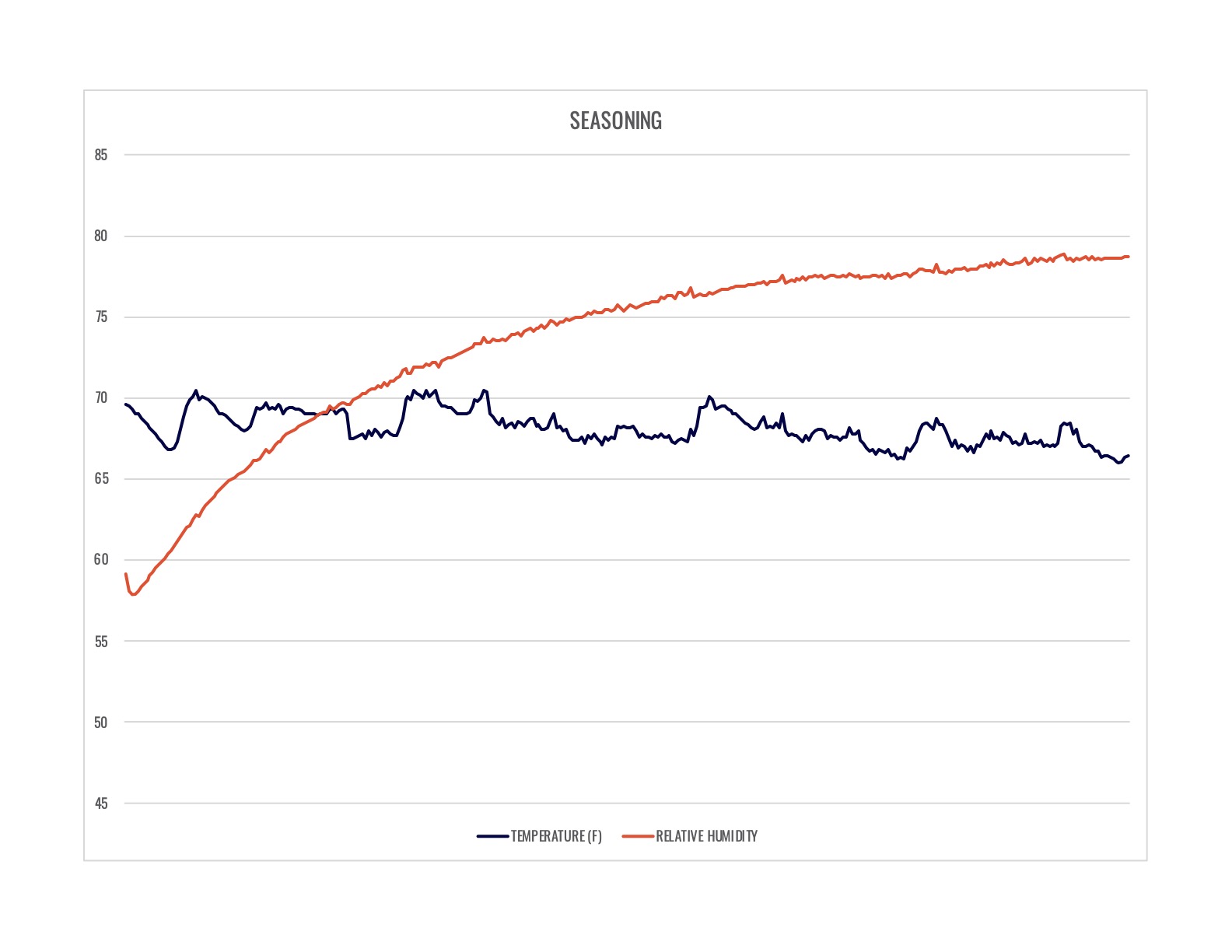
SEASONING
Since there’s only going to be two charts for this review, here’s one of them. The seasoning process didn’t show any abnormalities.
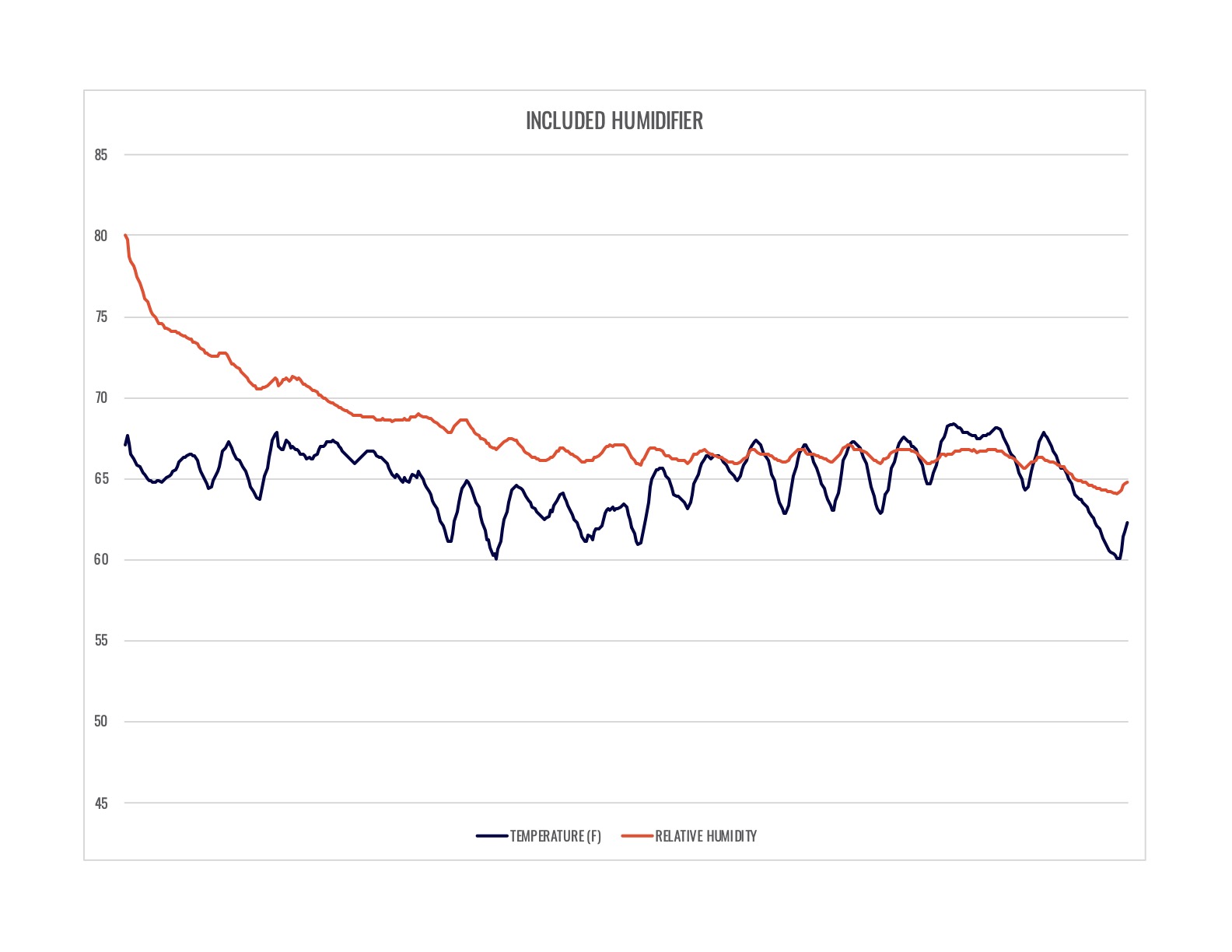
INCLUDED HUMIDIFIER
Despite my thoughts on florists’ foam humidifiers, the data here suggest that it mostly worked. I think some of this is due to the fact the humidor probably wasn’t fully seasoned, but whatever the case, this is a win for the Prestige Winchester.
BOVEDA
And then the SensorPush failed. It actually failed two weeks into the test when the humidity was above 67 percent and climbing. Unfortunately, I wasn’t actively checking in on all the SensorPush devices during this test and I didn’t realize it had failed. I actually didn’t realize it failed until I started writing this review.
The Boveda packs came out of the humidor weighing 136 grams, which suggests that this humidor didn’t have any major flaws in terms of keeping the humidity in, though that’s not an exact science.
Given how this testing process works, there’s not really enough time for me to restart it. That being said, given how this humidor performed up until this point—both testing and otherwise—I don’t think it changes the recommendation and as such, I opted to move forward without the data.
Two notes:
- I opted to not include the partial chart because some people might not read the words and would just look at the pictures and think this humidor performed flawlessly, which is possible. But, I took the approach of not trying to mislead anyone.
- It seems like about one out of every 12-15 SensorPush devices we’ve purchased has an issue. Sometimes it’s that the unit is battery hungry and other times the batteries just don’t last as long. Spoiler alert: this is going to cause issues in future reviews.
DRY CABINET
While I put the Winchester in the dry cabinet, I have no data to speak about.

THE GOOD
- The Early Humidity Testing Results Are Promising — I suspect this is largely due to how small this humidor is compared to the humidity elements we were using. Regardless, it appears the humidor is going to do okay at keeping the humidity inside.
- The Dividers Are Cool — While they do waste a bit of space, I really like the divider system. Yes, it’s actually less flexible than the traditional dividers, but it ends up looking a lot better and I don’t think you sacrifice that much space or flexibility.
- The Entire Lid is Magnetic — This is one of those features that I feel like all desktop humidors should have these days. I certainly am not surprised that some of the competitors don’t have magnetic lids, but I’m surprised by how rare it is at this price point.
- The Included Digital Hygrometer — Analog hygrometers at this price aren’t likely to work, it’s nice to see a company include a humidor that might actually be functional.
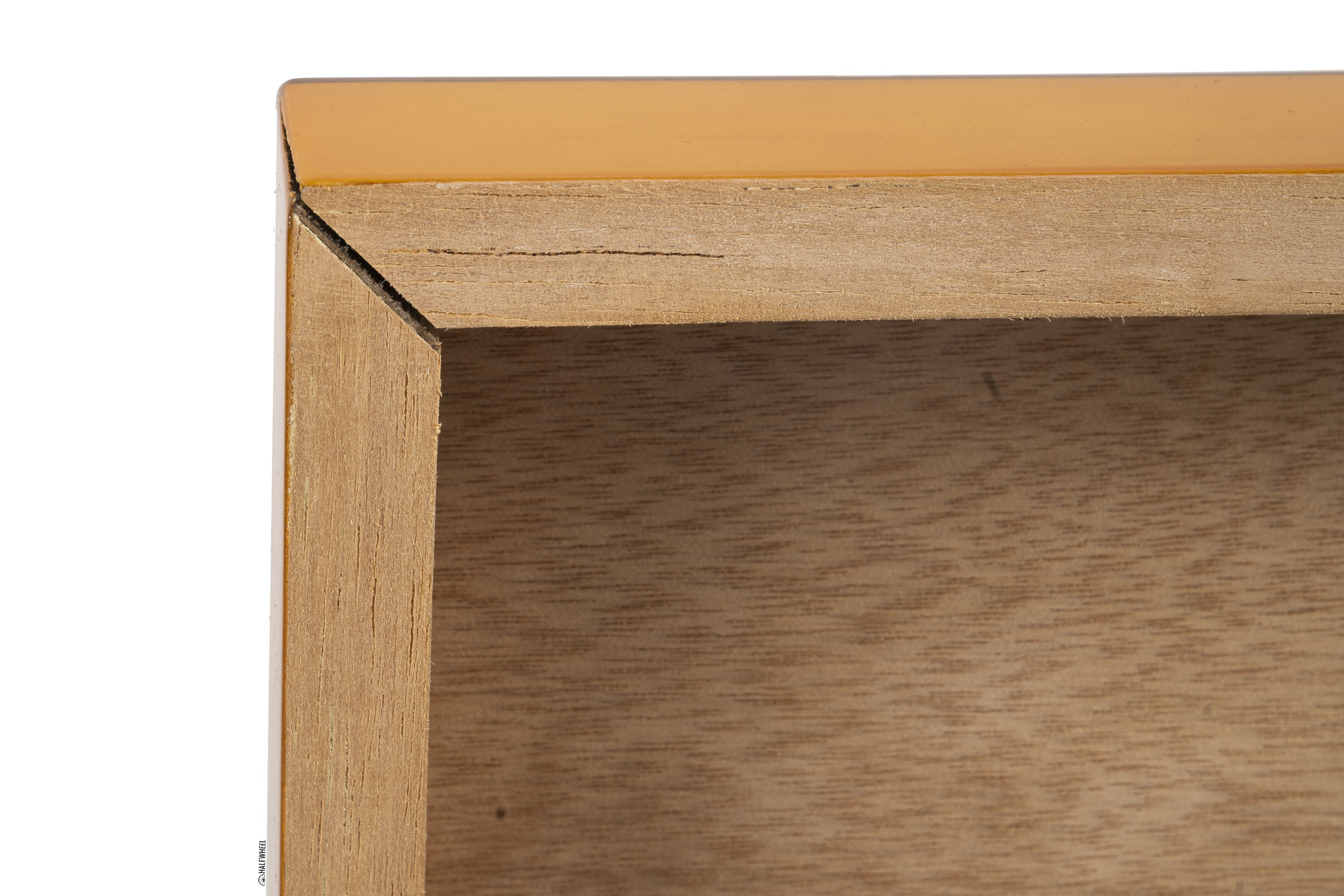
THE BAD
- The Build Quality Pt. 1 — Once removed from the well-padded shipping box it was apparent this humidor was not well made. The top and bottom pieces don’t appear to be the same size. The left and right sides of the humidor, particularly on the front, aren’t remotely close to being aligned. That’s from a visual perspective; running my hand down the side of the humidor makes it clear that each of the four sides isn’t aligned.
- The Build Quality Pt. 2 — There are noticeable gaps on the sides of the humidor for the interior piece that helps to form the seal.
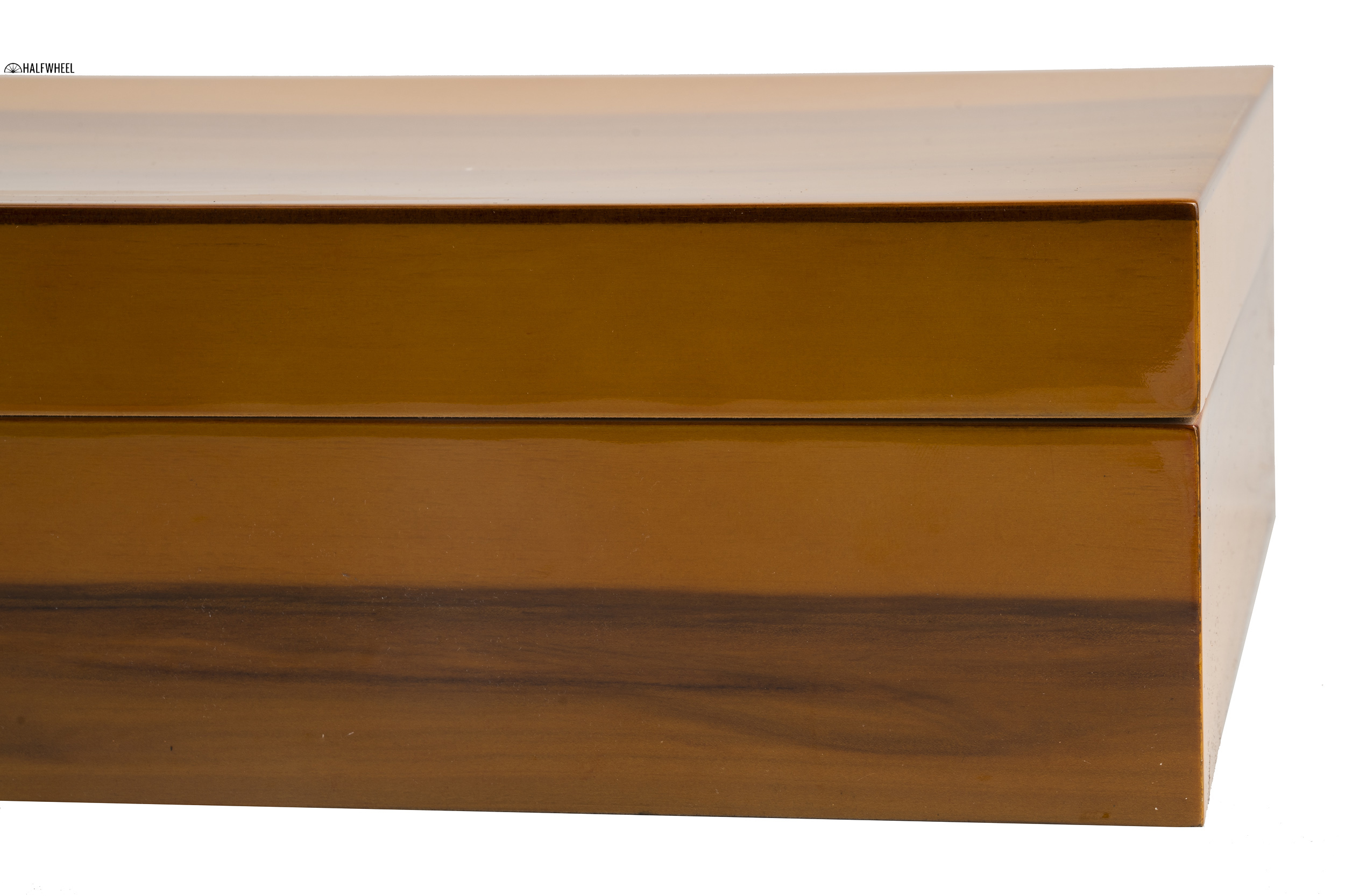
- The Build Quality Pt. 3 — It should be of no surprise given the first two bullet points that this humidor doesn’t inspire the most amount of confidence when closed. If I press on the front of the lid, it bounces back up a little because the humidor’s top and bottom pieces aren’t finished out well enough. The pieces are so unaligned that the key doesn’t actually lock the humidor unless I push down on the lid.
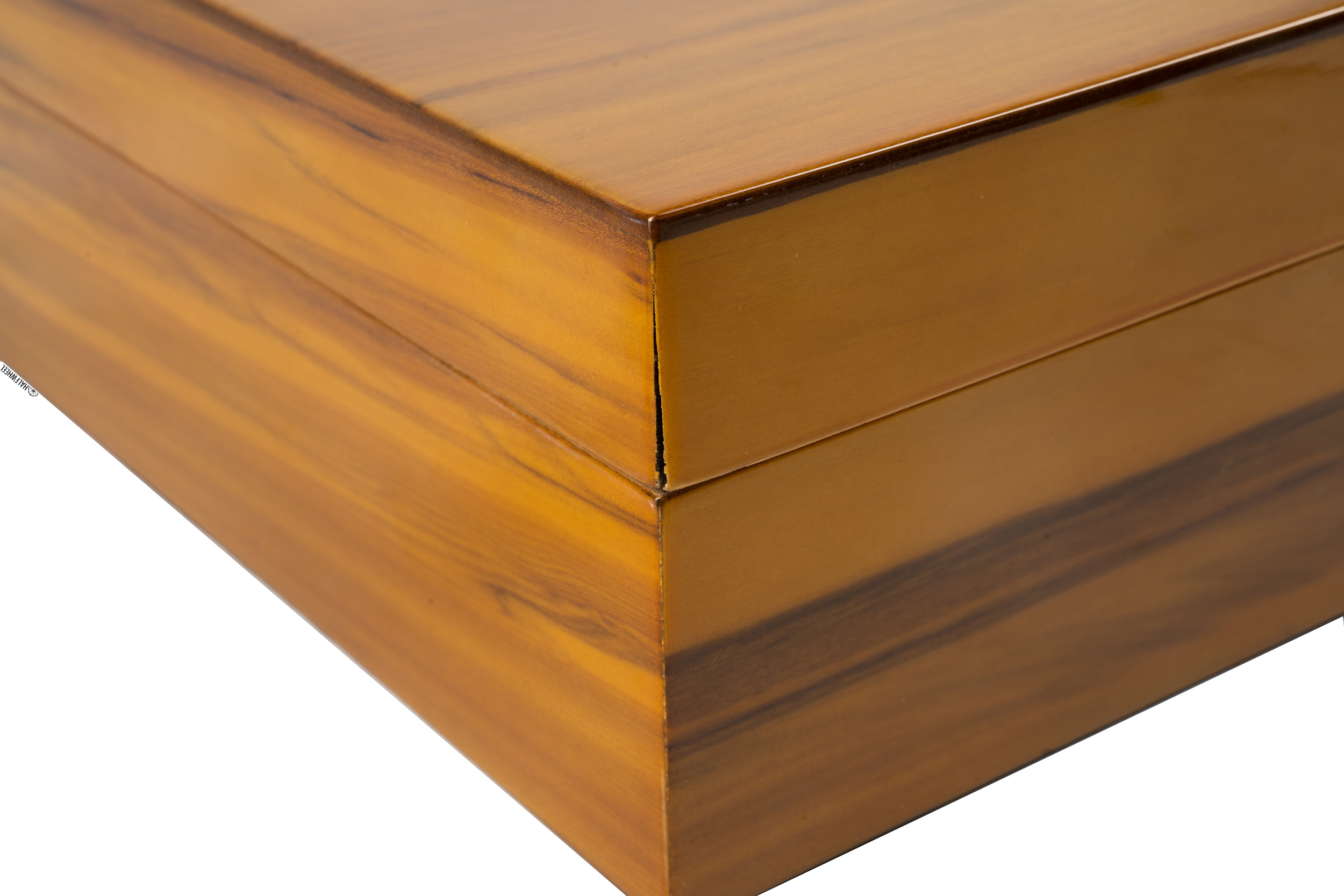
- The Build Quality Pt. 4 — One corner of the humidor’s lid showed up already in the process of falling apart. The exterior wood is peeling away from the rest of it, while on the inside the hinge has come apart.
- Quality Control? — Either this didn’t go through any quality control, which is concerning; or it somehow passed quality control, which might be more concerning. The unit we purchased was sold as new, it showed up in a box that didn’t give any indication it had been mishandled, repackaged or anything. Furthermore, the lacquer and other parts of the exterior don’t show any signs that it was dropped. Because I wasn’t there, I can’t be 100 percent certain that the issues happened at the factory, but there are no signs that suggest otherwise.
- It’s Not Efficient — While I love the look of a humidor like this, the wide shape means that it occupies a lot of space compared to the number of cigars it holds. If you are like the halfwheel office, you have a table where your desktop humidor sits. A humidor like this holds as much as a traditional 125-count humidor but occupies nearly double the amount of space on a table. Of note, per the Humidor Discount humidor calculator, this humidor doesn’t meet the 75 robustos threshold I tried to establish for this testing series.
THE COMPETITION
This is the third humidor of the seven humidor test and so far, all three have had issues.
- Savoy Marquis ($111.95) — While I certainly don’t think this applies to every Savoy Marquis or Savoy humidors in general, the one that we purchased has a visible gap in between the top part and the lid. As such, I cannot recommend this humidor.
- Prestige Princeton ($134.55) — This was the aforementioned “safe” choice from Prestige and I think it’s a pretty sensible humidor with one major flaw. The single included humidifier was unable to provide enough humidity for this unit and as such the testing results were awful. I cannot recommend this humidor.
- Craftman’s Bench Havana 90-Cigar ($79.95) — This is part of the sub-$175 humidor test. A full review is coming and I will update this review once that review has been published.
- Yannabis Cigar Humidor ($159.99) — See above.
- Quality Importers Old World ($94.99) — See above.
- The Deauville Tobacco Leaf ($99.99) — See above.
- Boveda Large Acrylic Humidor ($180) — This humidor is just over the $175 price point but would otherwise be the recommended option. It’s a large, see-through plastic box with a removable tray that allows you to show off your cigars. More importantly, it’s plastic, which means you don’t need to worry about seasoning it and really don’t need to worry about the seal. It just works. The issue with the Boveda is that it just doesn’t look like what most people think of as a humidor.
- Colibri Heritage Humidor ($495) — If you want a wooden humidor that is going to last, I think you are going to want to spend closer to $400. The Heritage Humidor can regularly be found at that price point and it’s just so much better in just about every way. It feels solid, it avoids the major manufacturing flaws and it has a much more modern look, albeit one that isn’t for everyone.
SHOULD YOU BUY IT?
No.
While I think there’s a decent chance that the Prestige Winchester we are testing works, it’s also falling apart. The bigger issue with the recommendation is the part about quality control. If a humidor that looks like this is capable of making it onto a store’s shelf, what else could go wrong. This humidor showed up in such poor condition I’d prefer to never speak of the Winchester again, which is a shame, because otherwise there are some interesting features.

